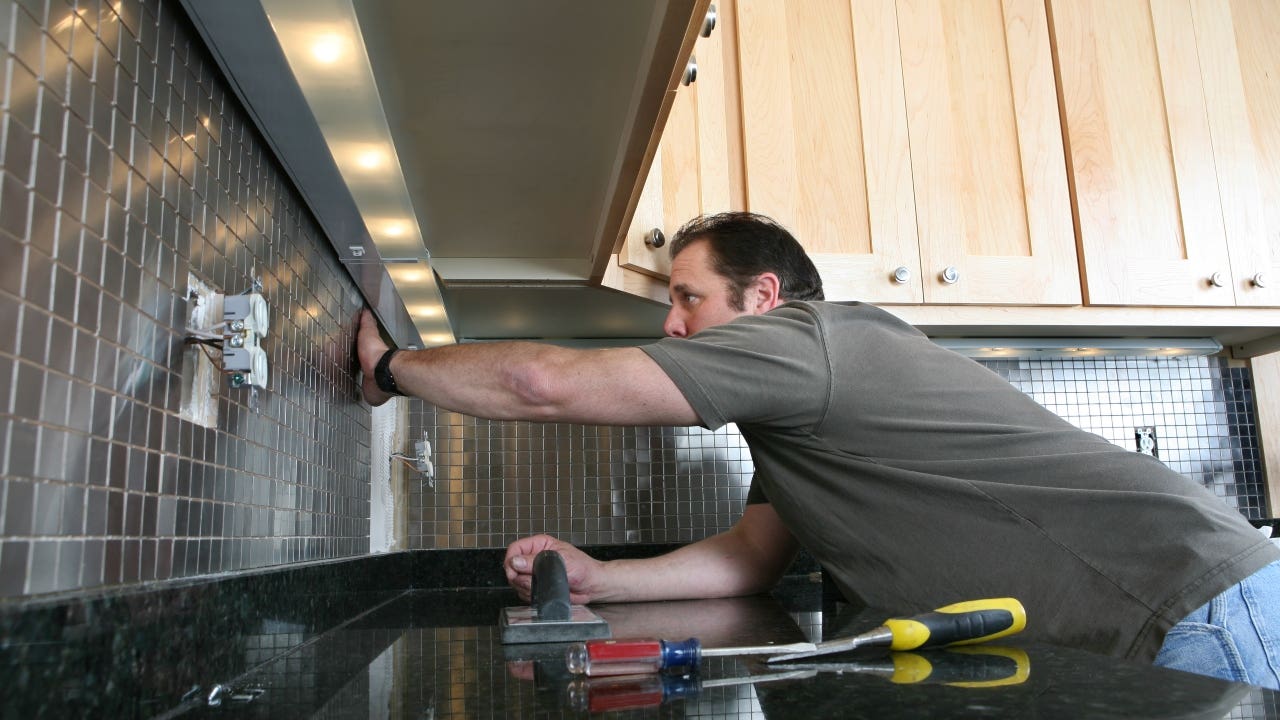VA cash-out refinance: How it works and what to consider

The Bankrate promise
At Bankrate we strive to help you make smarter financial decisions. While we adhere to strict , this post may contain references to products from our partners. Here's an explanation for .
Key takeaways
- If you have a VA loan, you can get a VA cash-out refinance to tap equity you've built up in your house.
- You can also change a conventional mortgage into a VA loan, via a VA cash-out refinance.
- To be eligible, you must meet the VA cash-out refinance guidelines for military service, plus the lender's requirements.
- To do a VA cash-out refinance, you'll need to pay a funding fee.
If you have a VA loan and you’ve built up equity in your house, you might be interested in learning more about a VA cash-out refinance. This type of refinancing can put money in your pocket, but exactly how much depends on your equity — the amount of your home you own outright. Here’s how a VA cash-out refinance works and what to consider before doing one.
What is a VA cash-out refinance?
Key terms
- Cash-out refinance
- A cash-out refinance allows you to tap your home equity by replacing your current mortgage with a bigger loan. You get the difference between the two in cash.
There are a few differences between a conventional cash-out refinance and a VA cash-out refinance. VA lenders typically offer lower interest rates because they are guaranteed by the government, and you can only get a VA cash-out refinance if you’re eligible for a VA loan. If your existing home loan isn’t guaranteed by the VA but you’re eligible for a VA loan, you can do this cash-out refinance to take advantage of VA refinance cash-out rates.
A VA cash-out refinance replaces your current mortgage — whether that’s a VA loan or a conventional loan — with a new VA loan. Ideally, the new loan has better terms while allowing you to cash out the equity you’ve built in your home. You can then use that cash for things such as upgrading the property or paying down debt.
How a VA cash-out refinance works
If you’ve been honorably discharged from the military or are currently on active duty, your service to your country comes with a big benefit: the ability to buy a home with a no-down payment VA loan or to refinance an existing mortgage, whether you already have a VA loan or not.
Note that VA cash-out refinances are reserved just for the home you’re living in, so if you’d like to refinance a loan for an investment property or second home, you’ll need to explore other options.
While the requirements differ, the process to get a VA cash-out refinance is similar to that of a conventional cash-out refinance (more on the steps below).
Example of a VA cash-out refinance
Let’s say you took out a $200,000 home loan and you’ve paid back $80,000 of that balance, but your home is still valued at $200,000. With a VA cash-out refinance, you can get a loan for $200,000 and use that $80,000 (less closing costs and fees) however you prefer.
Requirements for a VA cash-out refinance loan
To qualify for a VA refinance, you must be an active-duty service member or veteran who was honorably discharged and meets minimum service requirements, or a surviving spouse. Beyond that, VA cash-out refinance guidelines vary slightly by lender, but you usually need to meet these criteria:
- Obtain your certificate of eligibility (COE)
- Meet your lender’s minimum credit score requirement, generally 620
- Meet your lender’s debt-to-income (DTI) ratio requirement, generally no more than 41 percent
- Demonstrate proof of income
- Pay the VA cash-out refinance funding fee
VA cash-out refinance costs
A VA refinance cash-out loan can help you save money, but you’ll need to pay closing costs to do it. Compare at least three mortgage lenders and their respective origination fees plus other charges so you have a sense of how much you’ll need to bring to the table.
In addition to closing costs, you’ll pay the VA cash-out refinance funding fee, which varies depending on your status as a borrower:
- If you’ve never purchased a home with the VA benefit, the VA cash-out refinance funding fee is 2.15 percent of the loan principal.
- If you have used the VA benefit before — for example, if you have a VA loan and you’re refinancing it — the funding fee is 3.3 percent.
You can either pay this funding fee upfront or roll it into your loan. If you opt to roll it into the loan, just remember you’ll pay interest on that amount, too.
Pros and cons of a VA cash-out refinance loan
VA cash-out refinances have many benefits, but there are some drawbacks to consider, too.

Pros
- Quick access to cash
- Usually have lower rates
- Fund can be used for multiple reasons, like home improvement, debt payment or education

Cons
- Must be a current or former military service member to be eligible, or a surviving spouse
- Funding fee applies
- Only valid for primary residence
How to get a VA cash-out refinance
To get a VA cash-out refinance, you’ll need to:
- Find a lender. First, you’ll need to identify lenders that offer VA cash-out refinance loans. Then, you should compare rates and reviews for at least three lenders to find the best offer.
- Get your COE. You will need to get a certificate of eligibility (COE), which verifies that you meet the service requirements to take advantage of a VA loan. You can request this certificate online, via mail or potentially through your lender.
- Provide your chosen lender with your financials. This usually means handing over your COE, pay stubs, tax returns, bank account statements and other financial documents.
- Complete a home appraisal. Your lender will require a home appraisal in which a third-party examiner will assess the value of your home.
- Close the loan. Your lender should be able to walk you through this paperwork-heavy process to finalize the loan.
- Pay the applicable fees. You’ll likely owe your lender for closing costs, and you’ll need to pay the VA cash-out refinance funding fee, too.
VA cash-out refinancing FAQ
-
Besides a VA cash-out refinance, there’s also the VA IRRRL, or Interest Rate Reduction Refinance Loan, often called a VA streamline refinance. This option applies to homeowners who currently have a VA-backed loan, not those with conventional or FHA-backed mortgages. The benefit here is the ability to lock in a lower interest rate; you won’t be able to take cash out of your equity. The funding fee for the IRRRL is much lower — just 0.5 percent — and there isn’t as much red tape, as you won’t need to undergo a credit check or get a home appraisal.
If you’re less concerned about lowering your interest rate and more focused on getting liquid cash, consider a home equity loan or home equity line of credit (HELOC). The interest rates on these types of financing can be higher, but you’ll avoid the VA funding fee, and these choices could be better suited for your situation overall.
-
The VA cash out refinance guidelines allow for up to 100 percent of your home’s value, but some lenders may limit how much you can borrow.
-
VA cash-out refinancing is only valid for primary residences. Second homes and investment properties are not eligible and must be covered under different types of home loans. If you still need cash, consider a HELOC or home equity loan instead.
-
Because VA refinance cash-out loans are guaranteed by the VA, lenders see them as lower risk. As a result, a VA refinance cash-out loan will usually come with a lower interest rate than a standard cash-out refinance.
Additional reporting by Mia Taylor
Related Articles


What is a VA streamline refinance (VA IRRRL) and how does it work?

